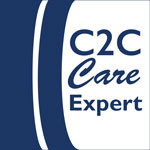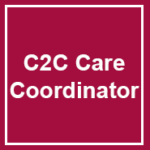writing on the backs of photographic prints, photos
- This topic has 7 replies, 5 voices, and was last updated 8 years, 6 months ago by
 Susan-1.
Susan-1.
-
AuthorPosts
-
-
October 14, 2015 at 1:16 pm #134163
Charlene Martin
ParticipantI would like to write brief descriptive metadata on the back of my photographs. I have recently heard this is not good, that I should use strategies such as writing on foil-backed labels $$ then sticking them to photo backs, or use surrogate photocopies and indexing systems. However, I worry about the data getting separated from the photo. I don’t have the access regulation control that I would like to have, so this is a real possibility (except for the stickers).
My question is: can I use Pigma Micron archival ink pens (Sakura Color Products Corp.), or should I stick to using soft-graphite pencils that the archival vendors sell? My impression was that the micron pen ink would eventually sink through the paper/RC layer of the photo, and end up on the emulsion side.
Thank you!
Charlene Martin/Archivist
Sisters of St Francis
Syracuse NY -
October 14, 2015 at 7:18 pm #134164
 Anne SchafferParticipant
Anne SchafferParticipantI wouldn’t advise you to write on the backs of photographs in anything other than pencil. I am not sure about the Pigma Micron pens, but a lightly pressed, soft-graphite pencil is a much safer bet.
If your metadata is lengthy, then labels might be best.
Anne
-
October 15, 2015 at 7:01 pm #134165
Evelyn
ParticipantI always use a soft pencil to write anything on the back of photos. If they are tin types, we use a layer of fingernail polish, archival marking pen (white) and then a layer of marking pen after number has dried.
-
October 17, 2015 at 9:51 am #134166
 Rachael ArensteinParticipant
Rachael ArensteinParticipantI thought that I’d make a quick comment on the use of fingernail polish. The process of putting down a barrier layer, then marking and then a top-coat (which is what I assume was meant!) is a commonly accepted procedure and is outlined nicely in the National Park Service Conserve-O-Gram on marking objects http://www.nps.gov/museum/publications/conserveogram/01-04.pdf. The Conserve-O-Gram also explains why the NPS was encouraging a switch to using Paraloid B72 as the lacquer layer over nail polish or other nitrocellulose based lacquers. Nail polish is certainly cheaper but it is not meant to last over time (think about how long a manicure is expected to last!). Nail polish is often chosen due to its ease of application in small bottles complete with brush applicator, but Paraloid B72 can now be purchased in this easy to apply form from preservation vendors such as University Products and Gaylord. If you are already spending the time on the right process then just a slight revision would make your procedure even better for the long-term!
-
October 17, 2015 at 10:19 am #134167
Evelyn
ParticipantThanks Rachael,
I knew as soon as I recommended nail polish that there were better alternatives out there. I have had a few products recommended to me and you are the second one to recommend Paraloid B72. I think I will try it the next time I put in an order for archival supplies. Our archival supplier, Carr McLean (we are Canadian) sells it for 16.30 a one ounce bottle. I have tried it and found it satisfactory. -
October 17, 2015 at 11:44 am #134168
 Rachael ArensteinParticipant
Rachael ArensteinParticipantEvelyn, You are not alone! B72 has some quirks in its drying (some bubbling if the consistency isn’t quite right) that make it a little less appealing to some but that is outweighed by the long-term benefits. The cost is also an issue but that one ounce bottle will last a while and the Conserve-O-Gram explains how to top it off if it gets too thick. Best, Rachael
-
October 17, 2015 at 11:51 am #134169
Evelyn
ParticipantThanks Rachel, I have just printed the Conserve-o-gram and reread it. One thing that I have never noticed before is that it comes in white which means you can write on it and not need a layer of paint for dark objects, that would save a lot of time.
-
October 18, 2015 at 11:30 am #134171
 Susan-1Member
Susan-1MemberCharlene,
Sign up for the next Webinar – Labeling and Marking Objects which will be presented on October 27 at 2:00 EDT. I think you’ll find helpful information there.
It is better to record the Accession number on your photos and then, include their metadata in your catalog.
Susan
-
-
AuthorPosts
- The forum ‘Connecting to Collections Care Forum Archives – 2015 through 2018’ is closed to new topics and replies.




